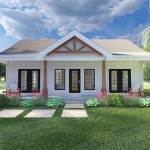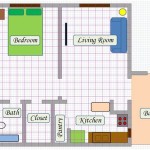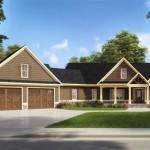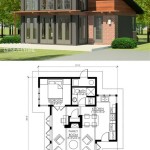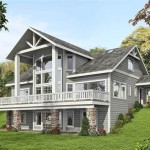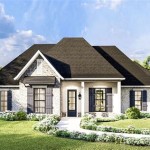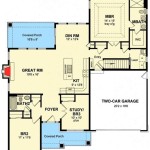Country Style House Plans: A Comprehensive Overview
Country style house plans evoke a sense of warmth, comfort, and connection to the land. These designs typically incorporate natural materials, functional layouts, and inviting spaces, making them a popular choice for those seeking a relaxed and welcoming home environment. This article will delve into the key characteristics of country-style house plans, exploring various subtypes, common architectural features, and considerations for selecting the right plan to suit individual needs and preferences.
The term "country style" is broad, encompassing a range of regional variations and design influences. While the core principles of rustic charm and practicality remain consistent, specific expressions of the style can differ significantly based on geographical location and historical context. Understanding these nuances is crucial for choosing a house plan that aligns with a particular aesthetic vision.
One common element among all country-style houses is an emphasis on creating a comfortable and functional living space. This often translates into open floor plans, spacious kitchens, and ample storage areas. Furthermore, the incorporation of natural light and views of the surrounding landscape is a paramount consideration. The layout typically prioritizes practicality and ease of movement, facilitating a seamless flow between indoor and outdoor spaces. The overall goal is to create a home that is both visually appealing and highly livable.
Key Features of Country Style House Plans
Country style house plans are characterized by a number of distinctive architectural features, materials, and design elements. Recognizing these common traits will assist in identifying and appreciating the essence of this timeless style. The features listed below are not necessarily present in every country-style home, but they represent a significant portion of the aesthetic.
Natural Materials: The use of natural materials is a hallmark of country-style architecture. Wood, stone, brick, and other organic elements are frequently incorporated throughout the design, both inside and out. For example, exposed wooden beams, hardwood floors, stone fireplaces, and brick accents are all common features. These materials not only contribute to the aesthetic appeal but also add warmth and texture to the living spaces. The choice of materials often reflects the local environment, further enhancing the connection to the land.
Inviting Porches: Porches are an integral part of the country-style home. They provide a transition space between the interior and exterior, offering a place to relax, socialize, and enjoy the surrounding scenery. Wide, covered porches with comfortable seating are particularly characteristic of this style. Often, porches are decorated with rocking chairs, swings, and other decorative elements that enhance the welcoming atmosphere. The porch serves as an extension of the living space, blurring the lines between indoors and outdoors.
Gabled Rooflines: Gabled rooflines are another common feature of country-style homes. These roofs are typically characterized by their simple, pitched design, which is both aesthetically pleasing and highly functional in shedding rain and snow. The gables can be further enhanced with decorative details such as dormers, brackets, and decorative trim. The roof often extends beyond the walls of the house, creating an overhang that provides shade and protection from the elements. The design of the roof is an important element in the overall character of the home.
Large, Functional Kitchens: The kitchen serves as the heart of the country-style home. These kitchens are typically designed to be spacious and functional, with ample counter space, storage, and modern appliances. A center island or peninsula is a common feature, providing additional workspace and seating. The kitchen is often connected to the dining area and living room, creating a seamless flow for entertaining and family gatherings. The design of the kitchen emphasizes both practicality and social interaction.
Fireplaces: Fireplaces are a focal point in many country-style homes, providing warmth, ambiance, and a sense of comfort. They are often constructed of natural stone or brick and can be either wood-burning or gas-powered. The fireplace serves as a gathering place for family and friends, particularly during the colder months. The design of the fireplace can be simple and rustic or more elaborate and decorative, depending on the overall style of the home.
Variations in Country Style House Plans
While the core principles of country style remain consistent, there are numerous variations within the broader category. These variations reflect regional influences, historical periods, and individual design preferences. Some of the most popular subtypes of country style include:
Farmhouse Style: Farmhouse style is characterized by its simplicity, functionality, and connection to the agricultural landscape. These homes typically feature clean lines, neutral colors, and durable materials. Common features include board-and-batten siding, large porches, and open floor plans. Farmhouse style often incorporates vintage or repurposed elements, adding character and charm. The goal is to create a comfortable and practical living space that reflects the values of rural life.
Cottage Style: Cottage style is defined by its charm, coziness, and romantic appeal. These homes typically feature smaller footprints, gabled roofs, and decorative details such as window boxes, shutters, and flower gardens. Cottage style often incorporates natural materials such as wood shingles, stone accents, and brick pathways. The interiors are typically warm and inviting, with comfortable furnishings and lots of natural light. Cottage style evokes a sense of fairytale charm and relaxation.
Ranch Style (Country-Influenced): While ranch-style homes are typically associated with mid-century modern design, they can also be adapted to incorporate country-style elements. This can be achieved through the use of natural materials, exposed beams, and large porches. Ranch-style homes offer the advantage of single-story living, which can be particularly appealing to those with mobility issues. The country-influenced ranch style provides a practical and comfortable living space with a touch of rustic charm.
French Country Style: French Country style blends rustic charm with elegant details. These homes typically feature stone exteriors, arched doorways, and decorative ironwork. The interiors are often adorned with ornate moldings, antique furniture, and tapestries. French Country style evokes a sense of Old World sophistication and romance. This style is characterized by warm colors, natural light, and a focus on creating a comfortable and inviting atmosphere.
Considerations When Choosing a Country Style House Plan
Selecting the right country-style house plan requires careful consideration of several factors, including individual needs, lifestyle, budget, and the characteristics of the building site. A thorough assessment of these factors will help to ensure that the chosen plan is both aesthetically pleasing and functionally suitable.
Lifestyle and Needs: The first step in choosing a house plan is to assess the lifestyle and needs of the occupants. This includes considering the number of people who will be living in the home, their ages, and their individual interests and hobbies. For example, a family with young children may require a larger living space and a dedicated play area, while a couple who enjoy entertaining may prioritize a spacious kitchen and dining area. Identifying these needs will help to narrow down the options and focus on plans that are well-suited to the specific requirements.
Budget: Budget is a critical factor in any construction project. It is important to establish a realistic budget early on and to stick to it throughout the process. The cost of building a house can vary significantly depending on the size, design, materials, and location. It is advisable to obtain multiple quotes from different builders and to factor in contingency funds for unexpected expenses. Choosing a simpler design and using more affordable materials can help to keep costs down without sacrificing the overall aesthetic appeal.
Building Site: The characteristics of the building site can have a significant impact on the design and construction of the house. Factors such as topography, soil conditions, orientation, and zoning regulations must be taken into consideration. For example, a sloping site may require a different foundation design than a flat site, and the orientation of the house should be optimized to maximize sunlight exposure and minimize energy consumption. Consulting with a local architect or builder can help to assess the site and determine the best approach for building a country-style home that is both visually appealing and structurally sound.
Energy Efficiency: Energy efficiency is an increasingly important consideration in modern house design. Choosing energy-efficient materials and incorporating passive solar design principles can help to reduce energy consumption and lower utility bills. Features such as well-insulated walls and roofs, energy-efficient windows and doors, and solar panels can significantly improve the overall energy performance of the home. Investing in energy-efficient features may require a higher initial investment, but it can result in long-term savings and a more environmentally friendly home.
Future Needs: It is also prudent to consider future needs when choosing a house plan. This includes anticipating changes in family size, lifestyle, and health. For example, it may be desirable to design the house with the potential for future expansion, or to incorporate features that will make the home more accessible for aging in place. Planning for the future can help to ensure that the house remains functional and comfortable for many years to come.
By carefully considering these factors, it is possible to select a country-style house plan that is both aesthetically pleasing and functionally suited to individual needs and preferences. The result will be a warm, inviting, and comfortable home that reflects the values of rural living and provides a lasting sense of place.

Country Style House Plan 2896 The Charlotte

Dream Country House Plans With Style

Country House Plans Floor With Front Porches

Country House Plans Home Style Thd

Plan 80833 Country Style House With Wraparound Porch 2428

House Plan 3 Bedrooms 2 Bathrooms Garage 6116 Drummond Plans

Country Style House Plans Home Designs
:max_bytes(150000):strip_icc()/cottage-of-year_0_0-4b00842222d14a9eb0162f617020910a.jpg?strip=all)
Our Best House Plans For Cottage

Country House Plans Classic Farmhouse Style For Growing Families

Plan 41438 Country Style Home With Functional Design 1924

